Introduction of ARM:
ARM stands for Advanced RISC (reduced
instruction set computer) machine. ARM started life as part of Acorn
makers of the BCC computer, and now designs chip for apple iPad. The
first ARM was established in Cambridge University in 1978. The Acorn
group computers have developed the first ARM commercial RISC processor
in 1985. ARM was founded and very popular in 1990. The ARM using more
than 98% of the mobile phones in 2007 and 10 billion processors are
shipped in 2008. ARM is the latest technology which replaced by
microcontroller and microprocessors. Basically ARM is a 16 bit/ 32 bit
Processors or Controllers. ARM is heart of the advanced digital products
like mobile phones automotive systems digital cameras and home
networking and wireless technologies.
- ARM is the most popular processors, particularly used in portable devices due to its low power consumption and reasonable performance.
- ARM has got better performance when compared to other processors. The ARM processor is basically consisting of low power consumption and low cost. It is very easy to use ARM for quick and efficient application developments so that is the main reason why ARM is most popular.
Introduction to ARM Architecture Families:
Features of Different ARM Versions:Version 1:
The ARM version one Architecture:
- Software interrupts
- 26-bit address bus
- Data processing is slow
- It support byte, word and multiword load operations
- 26-Bit address bus
- Automatic instructions for thread synchronization
- Co-processor support
- 32-Bit addressing
- Multiple data support (like 32 bit=32*32=64).
- Faster than ARM version1 and version2
- 32-bit address space
- Its support T variant:16 bit THUMB instruction set
- It support M variant: long multiply means give a 64 bit result
- Improved ARM THUMB interworking
- Its supports CCL instructions
- It support E variant : Enhanced DSP Instruction set
- It support S variant : Acceleration of Java byte code execution
- Improved memory system
- Its supports a single instruction multiple data
There are different versions of ARM, like ARMTDMI, ARM10XE, the meaning of TDMI and XE is given below:
ARM {X}{Y}{Z}{T}{D}{M}{I}{E}{J}{F}{S}
- X – Family
- Y – Memory management
- Z – Cache
- T – THUMB 16-bit decoder
- D – JTAG Debug
- M – Fast multiplier
- I – Embedded ICE macro cell
- E – Enhanced Instruction
- J – Jazelle (Java)
- F – Vector floating point unit
- S – Synthesizable version
ARM Architecture:
ARM is a load store reducing instruction
set computer architecture; it means the core cannot directly operate
with the memory. All data operations must be done by registers with the
information which is located in the memory. Performing the operation of
data and storing the value back to the memory. ARM consist 37 register
sets, 31 are general purpose registers and 6 are status registers. The
ARM uses seven processing modes that are used to run the user task.
- USER mode
- FIQ mode
- IRQ mode
- SVC mode
- UNDEFINED mode
- ABORT mode
- THUMB mode
The user mode is a normal mode; which
has least number of registers. It doesn’t have SPSR and limited access
to the CPSR. The FIQ and IRQ are the two interrupt caused modes of the
CPU. The FIQ is processing past interrupt and IRQ is slandered
interrupt. The FIQ mode has additional five banked registers to provide
more flexibility and high performance when critical interrupts are
handling. The Supervisor mode is the software interrupt mode of the
processor to start up or reset. The Undefined mode traps illegal
instructions is executed. The ARM core consist 32-bit data bus and
faster data flow. In THUMB mode the 32-bit of data divided into 16-bits
and increases the processing speed.
Some of the registers are reserved in each mode for specific use by the core. The reserved registers are
- SP (stack pointer).
- LR (link register).
- PC (program counter).
- CPSR (current program status register).
- SPSR (saved program status register).
The reserved registers are used for
specific functions. The SPSR and CPSR contain the status control bits
specific properties. These properties are defining operating mode, ALU
status flag, Interrupt enable or disable flags. The ARM core is operates
in two states 32-bit state or THUMBS state.
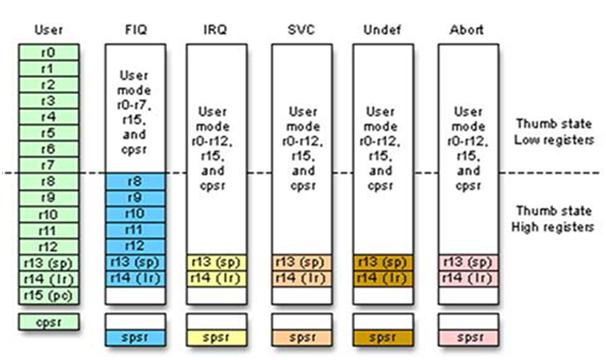
- ARM Mode Selection Registers
ARM BASED Temperature Measurement:
Temperature is a most important
parameter in the industrial applications. Accuracy of measured and
controlled is very essential. More industrials transformers are damaged
high voltage and over load and high temperature. Accuracy of temperature
measured and controlled is high demanding. This Project is designed to
interface the temperature sensor to ARM based microcontroller.
Working Procedure:
The LPC2148 is a 16/32 bit ARM7 CPU. The
temperature sensor LM35 is an analog sensor, connected to the LPC2148
microcontroller analog channel. The slandered temperature values are
pre-programmed in the microcontroller. The graphical LCD is connected to
the microcontroller output pins. The temperature sensor monitors the
temperature every sec. When the temperature is increased due to overload
then the sensor sends the analog signal to the microcontroller .The
microcontroller gives the alerts through buzzer and the LCD display. The
LCD displays the temperature on screen. This application is used in
industries to for safety purpose.
ARM7 Block Diagram and Features:
Features of ARM7:- The ARM7 is a 16/31 – Bit bus
- The static Ram is 40 kb
- On-chip flash programmable memory is 512kb
- It is a high speed controller 60 MHz operation
- Two 10 bit ADC converters provide a total of 14 analog inputs
- One 10- bit D/A converter
- Two 32 bit timers/counters
- 4- CCM (Capture Compare Modulation), 6-PWM, Watchdog timer
- One RTC, 9 interrupts
- One I2C protocol, SPI protocols, SSP protocol
- Two UART serial communication protocols
- Industrial control
- Medical systems
- Communication gate way
- Embedded soft modem
- General-purpose Applications
- Access control
- Point of scale



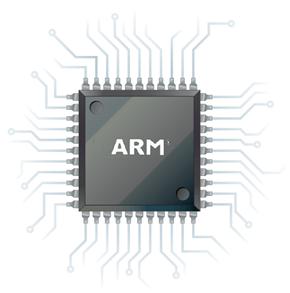
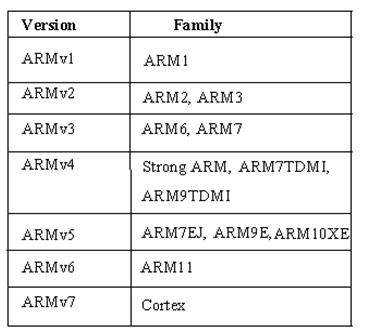
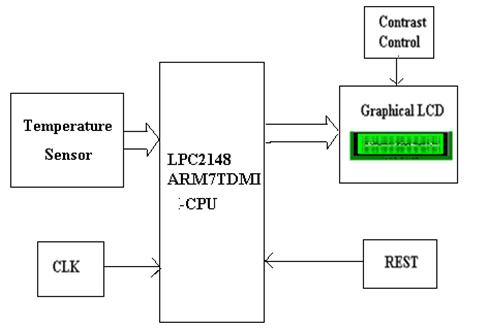
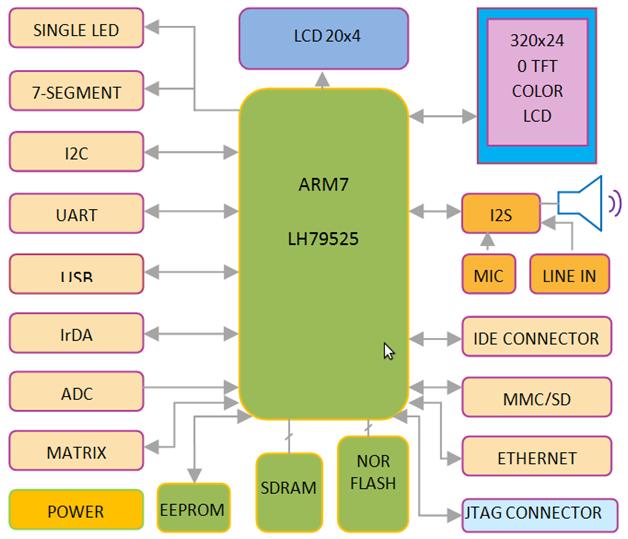




No comments:
Post a Comment